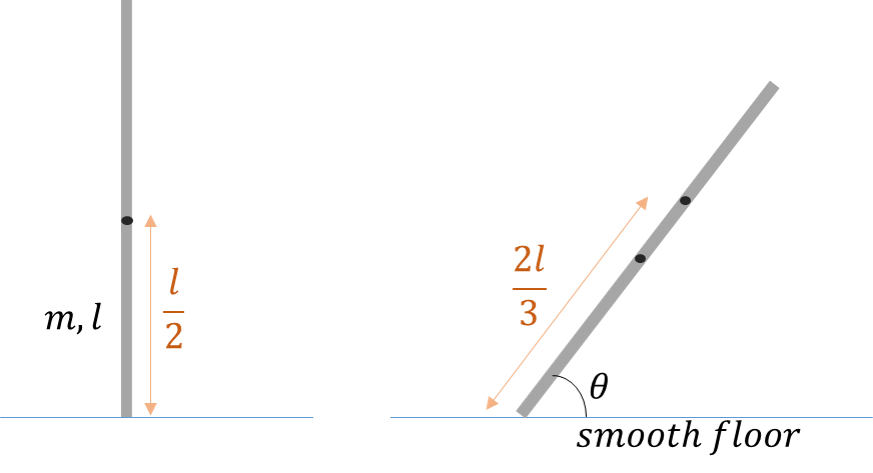Sliding rod (I)
A thin rod of mass and length is kept vertically on a smooth table. It is given a slight push such that it starts moving due to uniform gravitational field present in vertically downwards direction. Then the point on the rod at a distance of from the bottommost point moves such that it traces an ellipse (a part of it) which has eccentricity
Find the value of

The answer is 0.968.
This section requires Javascript.
You are seeing this because something didn't load right. We suggest you, (a) try
refreshing the page, (b) enabling javascript if it is disabled on your browser and,
finally, (c)
loading the
non-javascript version of this page
. We're sorry about the hassle.
Since there is no friction, the center of mass will move vertically down. When the rod is horizontal, the center of the rod will be at the original support point, and the selected point will be at a distance of 6 1 ℓ from the original support point. Assuming that the orbit is really ellipse, we can see that the semi major axis is a = 3 2 ℓ (the original starting position of the selected point) and the semi minor axis is b = 6 1 ℓ . the eccentricity is e = 1 − a 2 b 2 = 0 . 9 6 8 .
To see that the orbit is really an ellipse, look at https://en.wikipedia.org/wiki/Ellipse and scroll down to the "paper strip method".